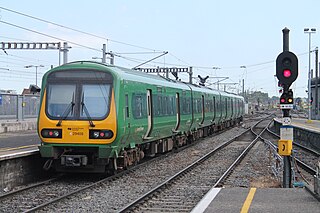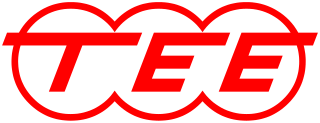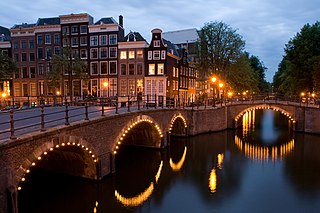
The Albert Schweitzer was a short-lived express train that linked Dortmund Hbf in Dortmund, Germany, with Strasbourg-Ville in Strasbourg, France. Introduced in 1980, it was operated by the Deutsche Bundesbahn (DB) and the SNCF.

The Blauer Enzian is a named express train service that currently runs between Frankfurt in Germany and Klagenfurt in Austria. Introduced in 1951, it originally ran via the German North–South railway line between Hamburg and Munich. Labelled as an international Trans Europ Express (TEE) train, it also linked with Zell am See and Klagenfurt in Austria from 1969. Trains were operated by the Deutsche Bundesbahn (DB) and its Deutsche Bahn successor, from 1970 also by the Austrian Federal Railways (ÖBB).
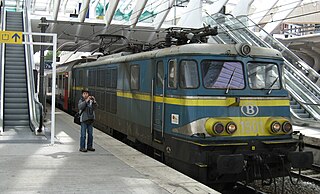
The Brabant was an express train that linked Gare du Nord in Paris, France, with Brussels-South in Brussels, Belgium. The train was named after the historical Duchy of Brabant of which Brussels was the capital.
The Diamant was an express train operated by the Deutsche Bundesbahn (DB), using different routes over the years. The name Diamant, Flemish for diamond, refers to the city of Antwerp, which is the European centre of diamond trade and has a diamond district. The initial service started in 1962 as a first-class-only FernTriebwagen linking the West-German capital Bonn with Antwerp, using a class DB Class VT 08 diesel multiple unit (DMU).

The Saphir was an express train operated by the Deutsche Bundesbahn linking the port of Ostend with Dortmund as part of a link between London and the Ruhr. The name Saphir, German for sapphire, refers to the Belgian gemstone industry.

The Merkur was an international express train linking Copenhagen, the Danish capital, with Germany. The train was named after the Roman God Mercury, the God of traders and travellers.
The Memling was an express train that linked Gare du Nord in Paris, France, with Brussel Zuid in Brussels, Belgium. The train was named after German painter Hans Memling.

The Paris–Ruhr was an express train that linked Paris in France, with Dortmund in Germany. The train was named after its two termini, Paris in the west and the Ruhr district in the east. For most of its life, it was a Trans Europ Express (TEE).

The Rembrandt was an express train that linked Amsterdam in the Netherlands, with Munich in Germany and later Chur in Switzerland. The train was named after the renowned Dutch painter Rembrandt. For its first 16 years it was a first-class-only Trans Europ Express, becoming a two-class InterCity in 1983 and finally a EuroCity in 1987.

The Parsifal was an express train that linked Paris with Dortmund in Germany and later Cologne. The train was named after Wagner's opera inspired by the legendary knight Percival.
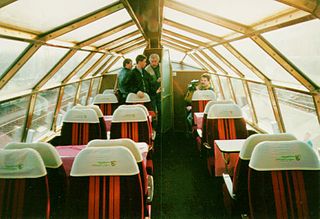
The Erasmus was an express train that linked The Hague, the Dutch seat of Government, with Munich in Germany. The train was named after the Dutch Renaissance humanist Desiderius Erasmus.
The Bacchus was an express train in Germany, initially linking Dortmund and Munich. The train was named after the Roman God of wine, although for most of its existence it linked two cities famous for producing beer.
The Friedrich Schiller was an express train in Germany, initially linking Düsseldorf and Stuttgart. The train was named after the philosopher and playwright Friedrich Schiller.

The Lufthansa Airport Express was an express train service in Germany, initially linking Düsseldorf and Frankfurt am Main Flughafen, and later Stuttgart too. The trains were operated by Deutsche Bundesbahn on behalf of the German airline Lufthansa, and with the airline providing the on-board customer service staff, and its use was limited to Lufthansa customers taking airplane flights into or out of Frankfurt or Düsseldorf airports.

The Gambrinus was an express train in Germany, initially linking Munich and Kiel. The train was named after the God of Beer Gambrinus.
The Heinrich Heine was an express train operated by Deutsche Bundesbahn, initially linking Frankfurt am Main and Dortmund. The train was named after the German poet and journalist Heinrich Heine.

The Molière was an international train operated by SNCF, initially linking Paris and Düsseldorf. The train was named after Jean Baptiste Poquelin using his stage name.

The Van Beethoven was an international train linking the Dutch capital Amsterdam and the West German capital Bonn. The train was named after the Bonn-born composer Ludwig van Beethoven.

The Colosseum was an express train initially linking Rome and Milan, later Frankfurt am Main. The train was named after the Amphitheatrum Flavium, renowned as the Colosseum.





